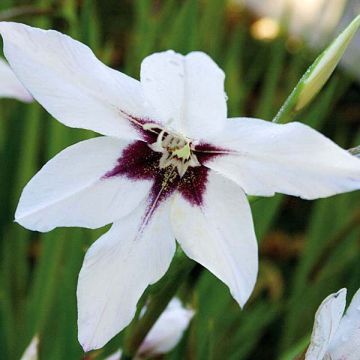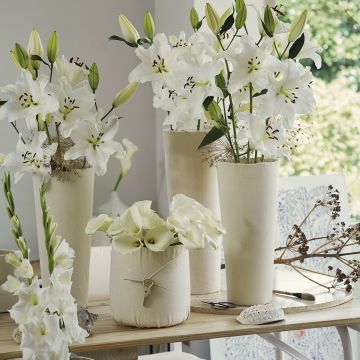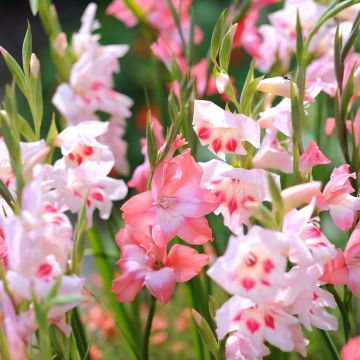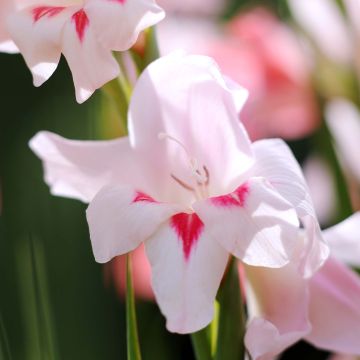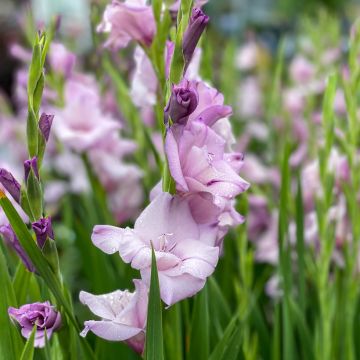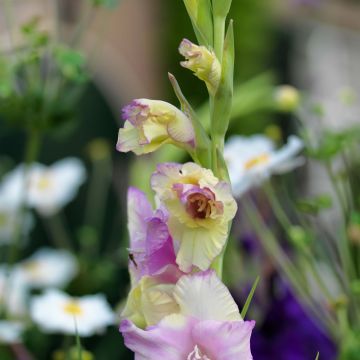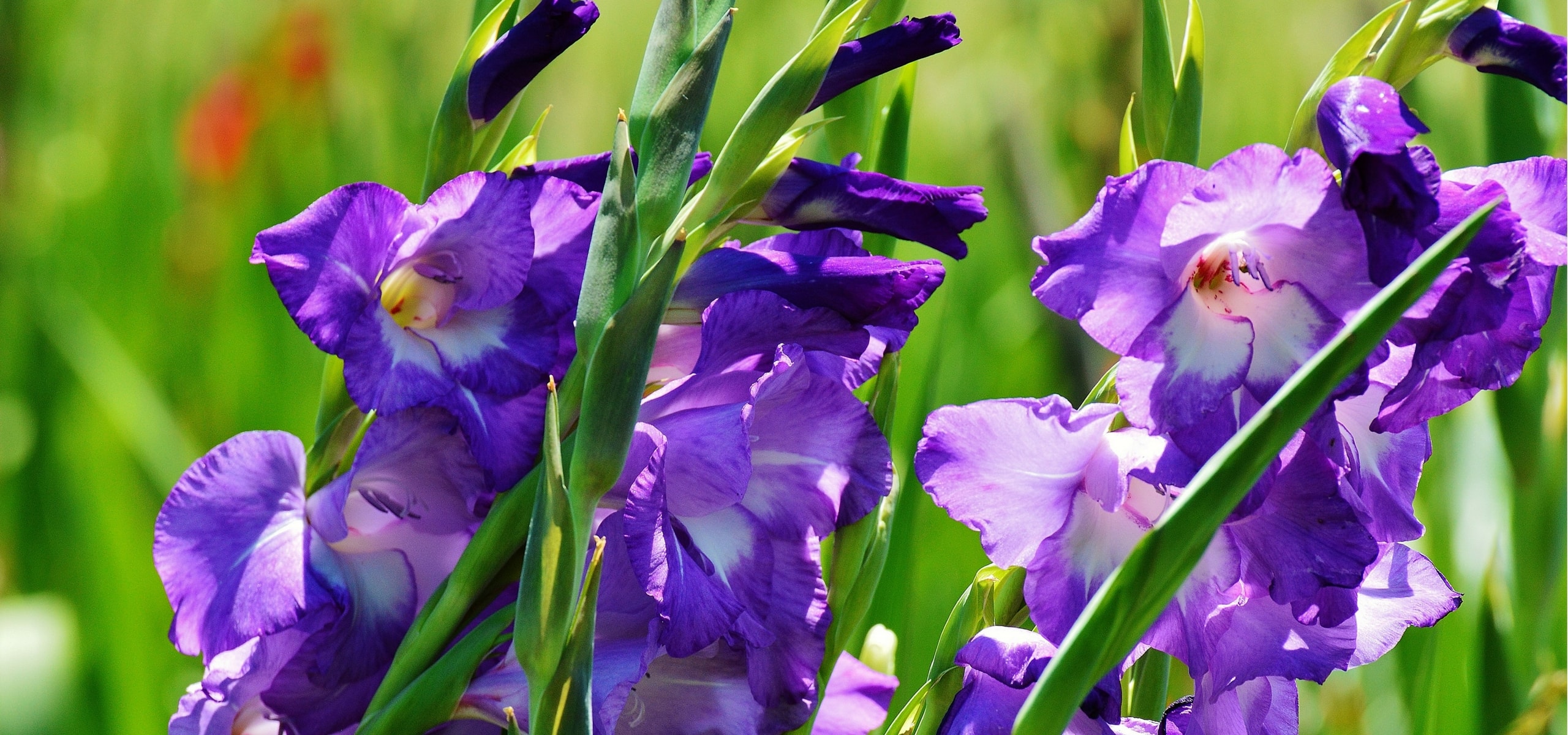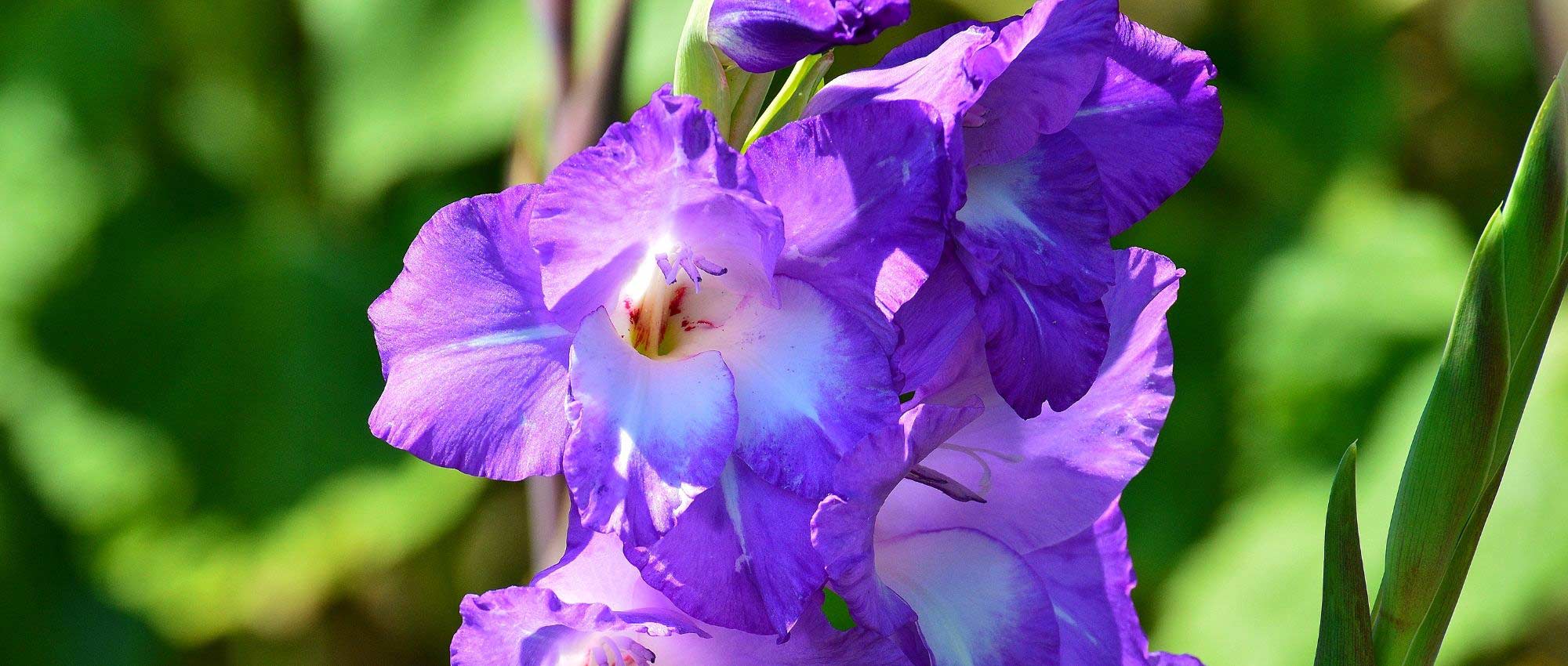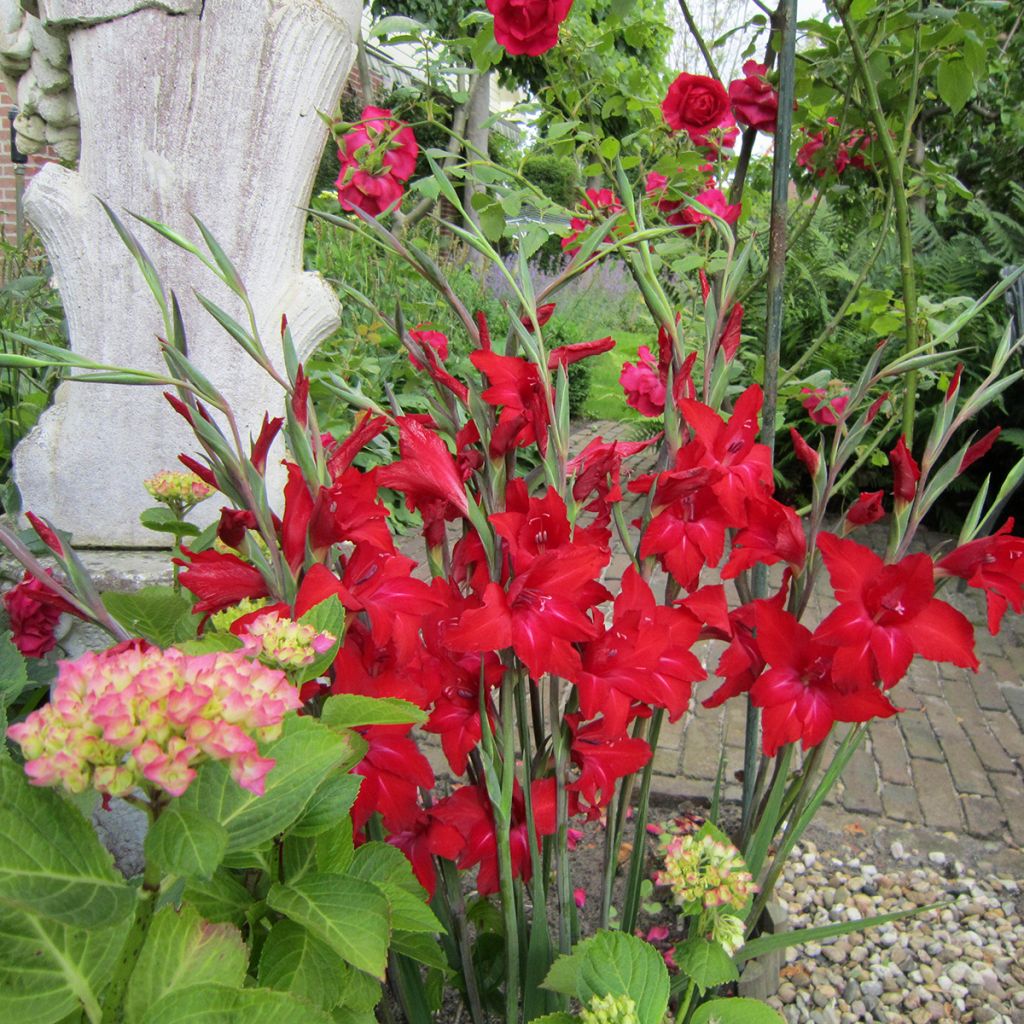

Gladiolus Red Drizzle - Sword Lily
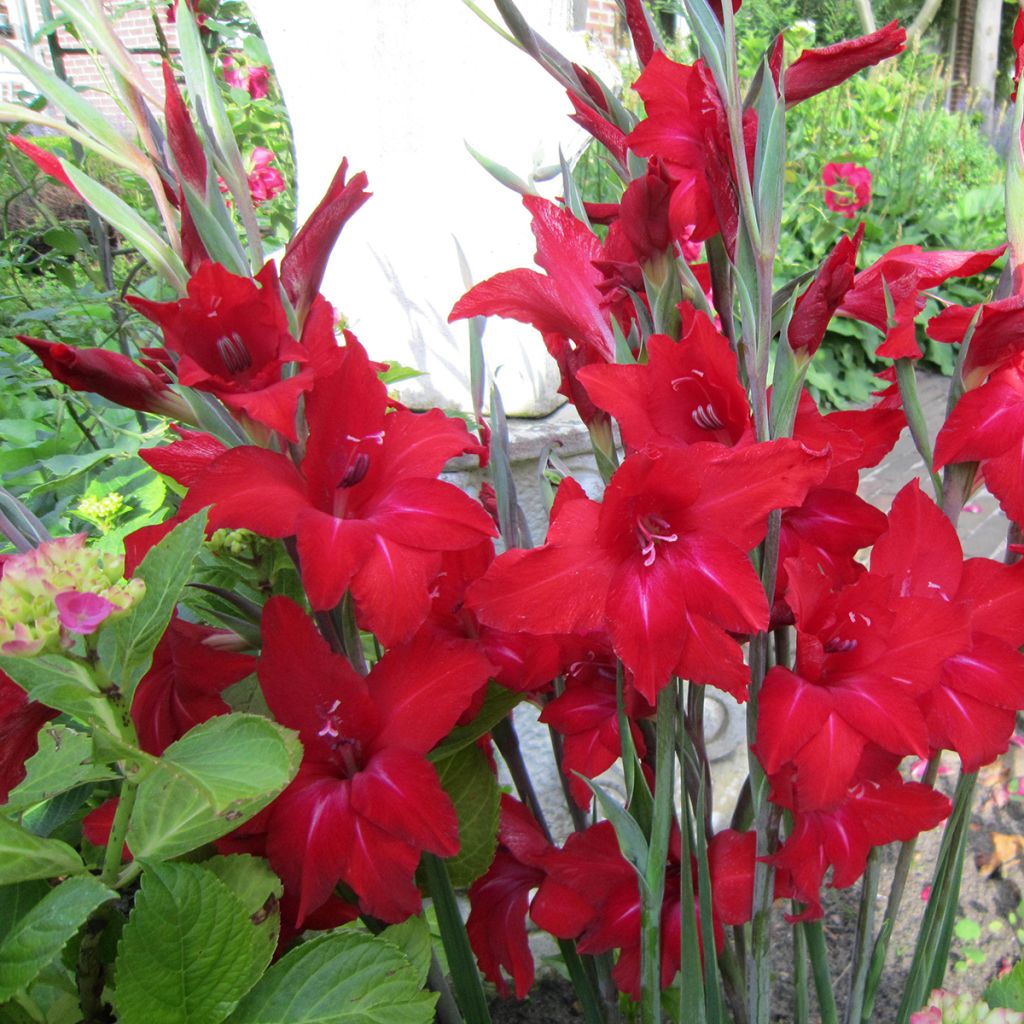

Gladiolus Red Drizzle - Sword Lily
Gladiolus Red Drizzle - Sword Lily
Gladiolus x colvillei Red Drizzle®
Colville's Gladiolus, Sword Lily
Special offer!
Receive a €20 voucher for any order over €90 (excluding delivery costs, credit notes, and plastic-free options)!
1- Add your favorite plants to your cart.
2- Once you have reached €90, confirm your order (you can even choose the delivery date!).
3- As soon as your order is shipped, you will receive an email containing your voucher code, valid for 3 months (90 days).
Your voucher is unique and can only be used once, for any order with a minimum value of €20, excluding delivery costs.
Can be combined with other current offers, non-divisible and non-refundable.
Why not try an alternative variety in stock?
View all →This plant carries a 6 months recovery warranty
More information
We guarantee the quality of our plants for a full growing cycle, and will replace at our expense any plant that fails to recover under normal climatic and planting conditions.
Would this plant suit my garden?
Set up your Plantfit profile →
Description
Gladiolus x colvillei 'Red Drizzle' is a dwarf variety that is hardier than the classic large hybrids. It can remain in open ground if it is mulched in winter. In late spring, this easy-to-grow plant forms upright spikes of star-shaped flowers in a vibrant red, punctuated with discreet white veins. This variety integrates well among other plants in the garden.
The gladiolus genus belongs to the Iridaceae family, which includes many ornamental plants, such as crocus, freesia, crocosmia, and iris. Gladiolus gets its name from the shape of its sword-like leaves, derived from the Latin word gladius. There are over 260 botanical species of gladiolus, the majority of which are native to South Africa and tropical Africa. There are numerous hybrids and horticultural varieties divided into three main groups: Grandiflorus (large-flowered), Primulinus (early-flowering), and Nanus (butterflies).
Gladiolus x colvillei is historically the oldest hybrid, obtained in England in 1823 by crossing G. cardinalis and G. tristis. Due to its size, it is often referred to as a dwarf gladiolus, with most of its varieties measuring 40 to 50cm (16 to 20in).
'Red Drizzle' is slightly more vigorous, as the floral spikes can reach a height of 65cm (26in), although still much shorter than the classic large hybrids, which were popular a few decades ago. Derived from a corm, this gladiolus forms a narrow tuft of elongated leaves, with a slightly glaucous green colour. Flowering takes place between June and July, in the form of spikes that rise above the foliage. Each spike has 6 to 8 flower buds. These open up in the sun as six-branched stars, composed of six tepals, which are three petals and three sepals of the same morphology. Their scarlet red colour is resplendent, lightly marked by a central white streak. The storage organ, the corm, is a pseudo-bulb which is equivalent to a swollen stem with scales. Each corm will produce 2 or 3 floral stems. Plant it in sunny and moist but well-drained soil.
This gladiolus will create a stunning effect planted en masse. However, it may be more judicious to place it in small clusters here and there within a diverse flower bed, so that other plants fill the space when it withers. It integrates easily as it does not require staking, and the possibility of leaving the corms in the ground during winter also simplifies bed management. You can combine it with other sun-loving plants such as 'Patricia Jojo' daylily, whose bright yellow double flowers create a strong contrast alongside 'Red Drizzle'. The small 'Blue Bouquetta' sage that produces long blue spikes from May to October will complete your scene while extending the flowering period of your flower bed. A white bear's breech will provide a beautiful backdrop.
Plant habit
Flowering
Foliage
Botanical data
Gladiolus
x colvillei
Red Drizzle®
Iridaceae
Colville's Gladiolus, Sword Lily
Cultivar or hybrid
Other Gladioli
View all →Planting and care
Choose a sunny position. It loves rich, fertile, well-drained soils. Sandy and loamy soil is ideal. It dreads compact clay. Avoid using manure to fertilise the soil as it causes bulb rot. Plant the corms 8 to 10cm (3 to 4in) deep, spaced 10 to 15cm (4 to 6in) apart. Water regularly during its growth and flowering period. The corms appreciate being dry during the resting period. The corms of this variety can overwinter in the ground, in well-drained, healthy soil, covered with a thick mulch to prevent damage from severe frosts. In very cold regions, dig up the plants as soon as the leaves have yellowed. Store the corms in turf and keep them dry, protected from heat and frost.
The corms can also be grown in pots, which can be protected indoors over winter. Plant 20 corms per 20 to 22cm (8 to 9in)) pot.
Planting period
Intended location
Care
Planting & care advice
This item has not been reviewed yet - be the first to leave a review about it.
Haven't found what you were looking for?
Hardiness is the lowest winter temperature a plant can endure without suffering serious damage or even dying. However, hardiness is affected by location (a sheltered area, such as a patio), protection (winter cover) and soil type (hardiness is improved by well-drained soil).

Photo Sharing Terms & Conditions
In order to encourage gardeners to interact and share their experiences, Promesse de fleurs offers various media enabling content to be uploaded onto its Site - in particular via the ‘Photo sharing’ module.
The User agrees to refrain from:
- Posting any content that is illegal, prejudicial, insulting, racist, inciteful to hatred, revisionist, contrary to public decency, that infringes on privacy or on the privacy rights of third parties, in particular the publicity rights of persons and goods, intellectual property rights, or the right to privacy.
- Submitting content on behalf of a third party;
- Impersonate the identity of a third party and/or publish any personal information about a third party;
In general, the User undertakes to refrain from any unethical behaviour.
All Content (in particular text, comments, files, images, photos, videos, creative works, etc.), which may be subject to property or intellectual property rights, image or other private rights, shall remain the property of the User, subject to the limited rights granted by the terms of the licence granted by Promesse de fleurs as stated below. Users are at liberty to publish or not to publish such Content on the Site, notably via the ‘Photo Sharing’ facility, and accept that this Content shall be made public and freely accessible, notably on the Internet.
Users further acknowledge, undertake to have ,and guarantee that they hold all necessary rights and permissions to publish such material on the Site, in particular with regard to the legislation in force pertaining to any privacy, property, intellectual property, image, or contractual rights, or rights of any other nature. By publishing such Content on the Site, Users acknowledge accepting full liability as publishers of the Content within the meaning of the law, and grant Promesse de fleurs, free of charge, an inclusive, worldwide licence for the said Content for the entire duration of its publication, including all reproduction, representation, up/downloading, displaying, performing, transmission, and storage rights.
Users also grant permission for their name to be linked to the Content and accept that this link may not always be made available.
By engaging in posting material, Users consent to their Content becoming automatically accessible on the Internet, in particular on other sites and/or blogs and/or web pages of the Promesse de fleurs site, including in particular social pages and the Promesse de fleurs catalogue.
Users may secure the removal of entrusted content free of charge by issuing a simple request via our contact form.
The flowering period indicated on our website applies to countries and regions located in USDA zone 8 (France, the United Kingdom, Ireland, the Netherlands, etc.)
It will vary according to where you live:
- In zones 9 to 10 (Italy, Spain, Greece, etc.), flowering will occur about 2 to 4 weeks earlier.
- In zones 6 to 7 (Germany, Poland, Slovenia, and lower mountainous regions), flowering will be delayed by 2 to 3 weeks.
- In zone 5 (Central Europe, Scandinavia), blooming will be delayed by 3 to 5 weeks.
In temperate climates, pruning of spring-flowering shrubs (forsythia, spireas, etc.) should be done just after flowering.
Pruning of summer-flowering shrubs (Indian Lilac, Perovskia, etc.) can be done in winter or spring.
In cold regions as well as with frost-sensitive plants, avoid pruning too early when severe frosts may still occur.
The planting period indicated on our website applies to countries and regions located in USDA zone 8 (France, United Kingdom, Ireland, Netherlands).
It will vary according to where you live:
- In Mediterranean zones (Marseille, Madrid, Milan, etc.), autumn and winter are the best planting periods.
- In continental zones (Strasbourg, Munich, Vienna, etc.), delay planting by 2 to 3 weeks in spring and bring it forward by 2 to 4 weeks in autumn.
- In mountainous regions (the Alps, Pyrenees, Carpathians, etc.), it is best to plant in late spring (May-June) or late summer (August-September).
The harvesting period indicated on our website applies to countries and regions in USDA zone 8 (France, England, Ireland, the Netherlands).
In colder areas (Scandinavia, Poland, Austria...) fruit and vegetable harvests are likely to be delayed by 3-4 weeks.
In warmer areas (Italy, Spain, Greece, etc.), harvesting will probably take place earlier, depending on weather conditions.
The sowing periods indicated on our website apply to countries and regions within USDA Zone 8 (France, UK, Ireland, Netherlands).
In colder areas (Scandinavia, Poland, Austria...), delay any outdoor sowing by 3-4 weeks, or sow under glass.
In warmer climes (Italy, Spain, Greece, etc.), bring outdoor sowing forward by a few weeks.






























